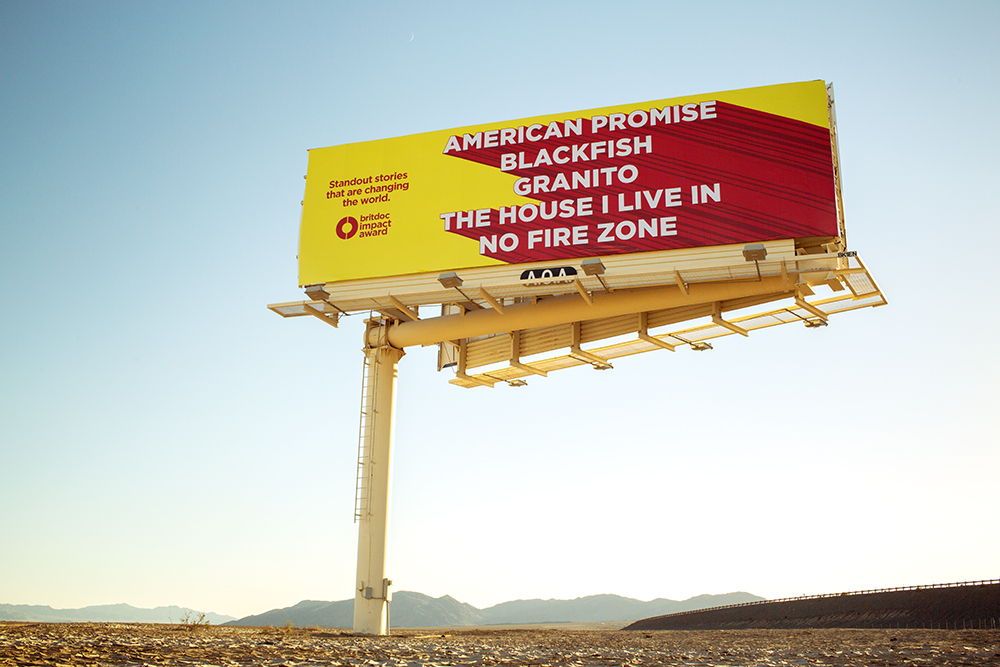
Initiative connects journalists and filmmakers to enrich storytelling
Jess Search is CEO of the BRITDOC Foundation, which Knight Foundation supports to promote excellence in journalism. Video by BRITDOC Foundation on Vimeo.
A few years ago here at the BRITDOC Foundation we began noticing the deepening relationship between journalism and documentary. It felt like a lot of long-form stories that used to be covered elsewhere were moving to documentary and that many younger people who would once have trained as journalists were more interested in making films. Related Link
“BRITDOC to help journalists and filmmakers advance deeper storytelling with $250,000 from Knight Foundation” – Press release (11/20/2014)
So we began to support – with the Bertha Foundation – films in this space, where storytelling and creative filmmaking meet journalism and investigation. What we are learning is that journalists and documentary filmmakers have a great deal to gain from each other’s crafts and collaborations and that their work can be highly effective in creating social and political impact. We hope to develop these ideas further and share them more widely with Knight’s support.
Kevin MacDonald, who won the Academy Award for his film “One Day in September,” has said, “The demand for documentary material is being driven by a decline in trust of the news media. There are terrible things going on in journalism and one of the reasons that documentary is thriving is because journalism is in crisis.” News anchor Christiane Amanpour has gone further, saying “Independent documentary is the last refuge of journalism in America.”
Two recent journalistic documentary feature films that BRITDOC has helped produce are raising ambitions higher still. “CITIZENFOUR,” Laura Poitras’ film about Edward Snowden, plays like a thriller and is as much a work of art as a work of journalism.
And then there’s “Virunga,” a film about illegal oil exploration in the national park in Congo. The hidden camera and documented evidence, gathered by the film team in collaboration with French journalist Melanie Gouby and park rangers, has been verified and reported by Human Rights Watch and Global Witness. So there is the popular film, now executive produced by Leonardo DiCaprio and released globally by Netflix, as well as independent reports and the long-form journalism Gouby did for Le Figaro.
The philosopher Alain de Botton recently commented in his new book, “The News,” that
“The dream of the news is that it makes us care about other people and situations. But we cannot identify with people to whom we haven’t been introduced. Humans will only respond to art, to people who are skilled in making you care.”
Documentary offers audiences exactly this chance to get audiences behind headlines, to experience the places and to connect with the humanity of the people involved whether they are the rangers risking their lives in the national park of Congo or Edward Snowden in a hotel room in Hong Kong. But for us at BRITDOC this moment of connection is only the beginning; it’s an opportunity to deploy new possibilities of engagement and social impact.
Through initiatives such as the Good Pitch, we’ve been working with a new wave of film teams who aren’t just hoping their film hits the mark; they are making a strategic plan for it. Filmmakers and journalists who often spend several years on a film become quite knowledgeable about where the obstacles to progress lie and can set ambitious goals, and identify target audiences and engagement strategies that may involve local library screenings and debates or international social media campaigns.
Every year we celebrate another five films and their teams with the Impact Award, which recognizes work that sets a bar for the rest of us to follow. This year’s winners are “American Promise,” which is a vital contribution in bridging the racial achievement gap in America; “Blackfish,” which provoked a huge backlash against SeaWorld and using orcas for entertainment; “Granito: How to Nail a Dictator,” which saw the conviction of a dictator; “The House I Live In,” which pushes for a reframing of the American “war on drugs”; and “No Fire Zone,” which led the United Nations to hold the Sri Lankan government to account for human rights violations at the end of the country’s civil war.
For more information on using film for social engagement and impact, check out the “Impact Field Guide,” a free online resource.
Recent Content
-
Journalismarticle ·
-
Journalismarticle ·
-
Journalismarticle ·


